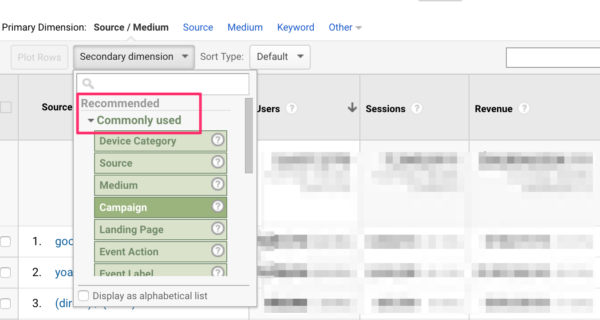Maximize Your Reporting Accuracy With Additional Measurements
In the world of data analysis, the pursuit for accuracy and deepness is a perpetual pursuit. Additional measurements use a gateway to augmenting reporting accuracy by providing a diverse lens via which to view information. Envision the power of unraveling complex layers of info that lie beyond the surface metrics, using a richer tapestry of insights waiting to be discovered. As we start this trip of leveraging additional measurements, the landscape of reporting precision beckons with pledges of boosted clearness and strategic decision-making.
Relevance of Second Measurements
Utilizing additional measurements is necessary for enhancing the deepness and granularity of reporting insights in data evaluation. Second dimensions make it possible for analysts to section and filter information based on details standards, offering a more tailored and targeted analysis.
Furthermore, second measurements assist in determining connections and connections that may not be promptly evident when evaluating information with only main dimensions. This much deeper degree of insight can result in more educated decision-making and strategic preparation within an organization. By leveraging second dimensions efficiently, companies can discover covert possibilities, identify locations for renovation, and optimize their total performance.
Carrying Out Second Dimensions
To integrate additional measurements effectively into data analysis procedures, services must take on an organized technique that lines up with their coverage purposes and logical objectives. Executing second dimensions entails picking the ideal dimensions that give deeper insights into main information metrics.
In addition, companies require to ensure that the picked second measurements pertain to the primary data and give purposeful context without creating info overload. Carrying out second measurements likewise requires specifying clear analytical questions that the extra dimensions will certainly aid address. By structuring the implementation procedure around these considerations, services can make the most of the value stemmed from secondary measurements and improve the precision and deepness of their coverage.
Studying Data With Second Dimensions

One key aspect of examining data with additional measurements is to make sure that the selected dimensions straighten with your particular logical objectives. Choosing the right second measurements can supply context and nuance to your key information metrics, enabling you to draw even more precise verdicts and make notified choices based upon the insights gained.
Moreover, leveraging secondary measurements effectively can assist in identifying outliers, recognizing the effect of various variables on your key efficiency indications, and getting a detailed view of your data landscape. By delving right into data with second dimensions, you can enhance the depth and quality of your evaluation, leading to more durable reporting and workable end results.

Enhancing Insights With Second Dimensions
Checking out data with additional measurements not only grows analysis however also magnifies the capacity for revealing useful understandings that can considerably enhance reporting accuracy. By including additional measurements to your records, you can acquire an extra thorough understanding of the partnerships between different information points. When evaluating information with primary measurements visit the website alone., this enhanced perspective enables you to identify patterns, trends, and connections that might have been neglected.

Fundamentally, leveraging secondary dimensions equips you to draw out richer understandings from your data, allowing you to make more enlightened decisions and maximize your coverage accuracy.
Ideal Practices for Additional Dimensions
Utilizing secondary measurements properly needs careful consideration of vital methods to boost information evaluation and reporting accuracy. When executing additional measurements, it is important to align them with your key metrics to derive significant understandings.
An additional important technique is to trying out different combinations of secondary and key measurements to reveal distinct connections and patterns within your data. This iterative approach can disclose important insights that may have been forgotten otherwise. Furthermore, it is crucial to routinely evaluate and you could check here refine your secondary dimension options to ensure they continue to be appropriate and straightened with your evolving reporting requirements.
In addition, documenting the reasoning behind your selection of secondary dimensions can right here provide context for future analysis and assist in collaboration within your team. By complying with these ideal techniques, you can make best use of the efficiency of additional dimensions in boosting your reporting accuracy and driving educated decision-making.
Final Thought
Integrating secondary measurements in data evaluation is critical for making best use of reporting accuracy and gaining deeper understandings right into performance fads. Carrying out best methods for second dimensions improves the deepness of analysis and improves the significance of reporting end results.
In addition, additional measurements assist in determining correlations and partnerships that may not be promptly evident when evaluating information with only main dimensions. Implementing additional dimensions entails selecting the ideal measurements that provide much deeper understandings into primary information metrics. Carrying out second measurements likewise requires defining clear logical concerns that the additional dimensions will help address.When analyzing data with second measurements, it is essential to concentrate on removing valuable insights that complement main data metrics. By including second measurements right into your analysis, you can reveal patterns, fads, and relationships that might not be evident when looking at the data from a key measurement alone.